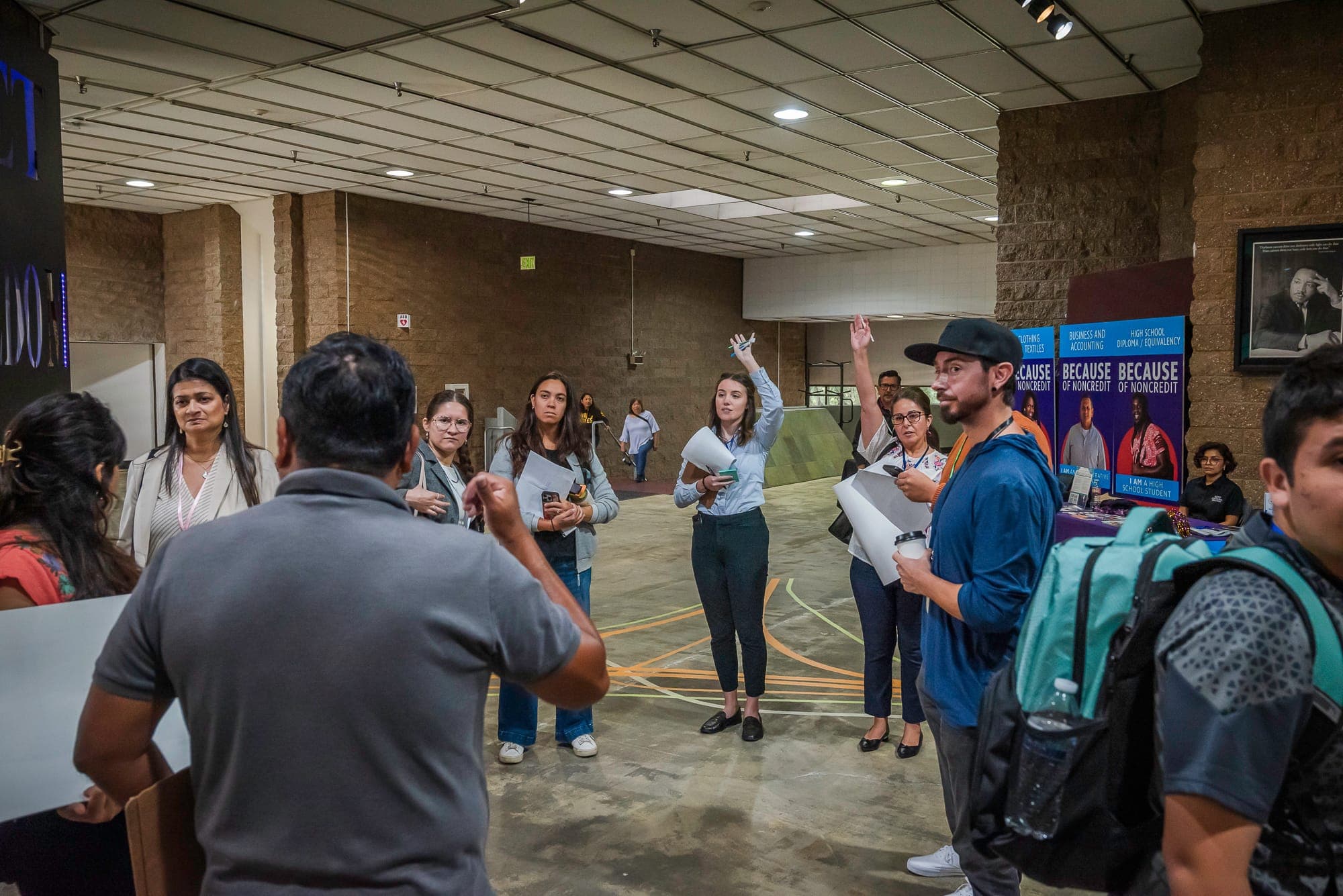
News
By Kennedy O'Dell, August 26, 2025
The federal government has two strong transit-oriented development financing programs, RRIF & TIFIA, but both have been plagued by administrative burden for a decade. Smart Growth America’s LOCUS coalition believes that now is a key opportunity to improve government efficiency, strengthen public-private partnerships, and unlock economic growth through transit-oriented development.
Transit-oriented development (TOD) is a boon for transit systems and communities because it spurs economic growth, fosters walkable, connected neighborhoods, and shortens commute times for everyone by providing alternatives to personal vehicles. Critically, as transit systems across the country seek paths to financial stability, TOD offers a proven path to increased ridership. In addition, selling or leasing land to developers can generate additional revenue streams for local agencies. By concentrating economic activity, promoting efficient land use, improving access to transit, and expanding housing options, TOD can strengthen communities and the systems that serve them.
Despite the numerous benefits, the federal government has generally been an inconsistent partner for TOD, often bogged down in administrative burdens related to the fact that it can involve multiple federal agencies. By definition—and to great benefit—TOD is at the intersection of transportation and land use, which puts it at a crossroads of interdepartmental and intergovernmental collaboration. This overlap can also create process challenges and raise jurisdictional questions that lead to delays. Uncertainty over which entity should be doing which policy task, and whether they have the authority or funding to do so, has plagued TOD-related efforts due to the cross-agency, collaborative nature of the work.
Rather than supporting transit-oriented development broadly across programs and integrating TOD into transit programs, the approach pursued by Congress and various administrations has to date been much more limited. The Federal Transit Administration’s (FTA) efforts to support joint development and value capture, as well as implement the Pilot Program for Transit-Oriented Development Planning, have all been meaningful. As are recent congressional efforts, like the Build More Housing Near Transit Act, which would provide a boost to a competitive transit grant application’s score if it incorporated pro-housing policy. However, Congress and the Administration must do more. Specifically, they must make clear that transit-oriented development is a priority, and they must unlock TOD financing through the Railroad Rehabilitation and Improvement Financing (RRIF) and the Transportation Infrastructure Finance and Innovation Act (TIFIA) programs.
The RRIF and TIFIA programs are two federal financing programs that offer very low-interest direct loans and loan guarantees to finance the development of infrastructure and transit-oriented development projects. Eligible TOD projects must be within a half-mile walking distance of a qualifying station/facility. Between the two programs, eligible projects can include commercial development, residential development, public infrastructure projects, economic development projects that involve public infrastructure, and joint development. While the specific project requirements vary between RRIF and TIFIA, the general goal of TOD eligibility is to offer attractive loan terms for projects that support increased transit ridership. For more information on project eligibility and the program as it stands, visit the Build America Bureau’s TOD-specific website.
During the lead-up to the FAST Act in 2015, Smart Growth America’s LOCUS coalition took a leadership role in championing language that included transit-oriented development project eligibility. This language was incorporated into the FAST Act, passed by Congress, and signed into law. While securing TOD project eligibility was a significant win, implementing the provision has been challenging. Both the RRIF and TIFIA programs were not initially designed to finance TOD projects, but were instead originally authorized to provide financing for traditional infrastructure. This has posed a host of challenges as requirements that made sense for one type of project fail to map easily onto the other (like bond rating requirements and NEPA specifics). In fact, only one TOD project has been successfully financed using these programs to date, with a few more in the pipeline—not nearly enough to address the pressing need for more housing near transit across the country. With high interest rates hampering new housing development, this tool has enormous potential to unlock more well-located housing.
Over the past several years, LOCUS developers have continued to share their perspectives in conversations with the Department of Transportation and Congress in efforts to reform RRIF and TIFIA to allow both programs to better serve as financing tools for transit-oriented development. While there have been a number of improvements, including clarifying language around specific requirements for the financing and process adjustments that have streamlined the program, both RRIF and TIFIA still have issues that make them burdensome and less functional than intended for private sector developers.
To address these challenges, LOCUS recently provided input on draft legislation being considered in Congress and submitted a comment letter to USDOT on how RRIF and TIFIA might be reformed in the upcoming surface reauthorization bill. Specific recommendations include:
- Extend the period that the programs can be used for TOD projects
- Harmonize the definitions of what a transit-oriented development project is between programs for clarity
- Consider exemptions in statute from NEPA, Davis-Bacon, and Buy America requirements for TOD projects, and clarify that TOD projects should not be required to appear on State Transportation Improvement Programs (STIPs)
- Streamline the internal deliberation process within the federal government to shorten the overall loan processing timeline
- Create a new, targeted, and more streamlined loan program for smaller TOD projects, which could be especially helpful in smaller communities and rural areas with existing downtowns or activity centers with demand for transit-oriented development
Related News

© 2026 Smart Growth America. All rights reserved
Site By3Lane Marketing








